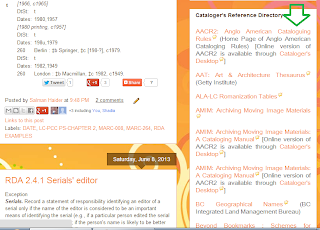RDA -- INTRODUCTION BACKGROUND AND HISTORY
Resource Description and Access ( RDA ) is a standard for cataloguing that provides instructions and guidelines on formulating data for resource description and discovery. Intended for use by libraries and other cultural organizations such as museums and archives, RDA is the successor to the Anglo-American Cataloguing Rules, Second Edition (AACR2), the current cataloging standard set for English language libraries. RDA was initially released in June 2010. In March 2012, the Library of Congress announced it will have fully implemented RDA cataloging by March 31, 2013. Several other national libraries including the British Library, Library and Archives Canada, National Library of Australia, and Deutsche Nationalbibliothek also planned to implement RDA in 2013. Background RDA emerged from the International Conference on the Principles & Future Development of AACR held in Toronto in 1997. It was quickly realised that substantial revision of AACR2 was re...



